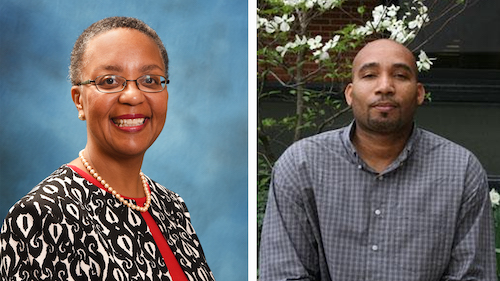So, Terri, when we talked in December, you walked us through an ethical framework for vaccine distribution that emphasized equity, especially in terms of race, class and essential worker status. Viewed through that lens, how would you say things are going?
Terri: Well, one of the things we talked about was that healthcare workers should be first in line, and we absolutely saw that. One thing I didn’t emphasize as much that we’ve seen become very relevant is age group. I think the state was probably right to target the elderly first. From a public health perspective, you do want to reach the group that’s disproportionately hit, and especially when you look at death and hospitalization rates, the elderly were absolutely the most vulnerable to death. So the vulnerable workforce approach I emphasized is ethical; the vulnerable age approach has had a good effect. Beyond that, though, I think there are still lots of questions.
Krim: I agree with all that. It was a no brainer that healthcare workers and the elderly, especially those at long-term care facilities, had to be first in line. Now that the distribution is about to get much broader, though, I think you’ll see things get more difficult. Specifically, when you’re talking about vaccinating the entire country, you have to address issues of access for those who, for various reasons, might have more challenges in accessing the vaccine. The other issue is those who say they are hesitant to get the vaccine. Within that group, there’s a lot of diversity: Some people are taking more of a wait-and-see approach, and others are saying they’ll refuse to get it. So we’re going to have to find ways to make it more enticing.
Well, I want to talk about those issues, but before we do, let’s backtrack to a couple recent challenges we’ve had with Michigan’s rollout. Regarding racial equity, a couple weeks ago, we learned there were some issues with how the state was collecting data on race — namely, that it wasn’t. Then, about a week later, they released some data, but it was incomplete. And then finally, when we got a look at the partial numbers, some of the trends weren’t good. For example, Black Michiganders, despite being disproportionately impacted by COVID, were getting vaccinated at half the rate of white Michiganders. Can you sort some of that out for us?
Terri: That is absolutely true, and as I understand it, some of these problems resulted from the design of the electronic health records, which are used to compile the data the state is reporting out. In many cases, there wasn’t a place for race to be captured, and so that’s why you saw the state’s Chief Medical Executive Dr. Khaldun actually come out and ask the general public to make sure they identify their race when they get the vaccine. This way, it will at least be captured on paper as we’re waiting for the electronic fix. But this is a big deal because you can’t fix a problem that you’re not able to measure.
Krim: This is absolutely right, and I think these kinds of problems with data just add to the skepticism we’re seeing about the transparency of what’s going on. When you already have groups that are hesitant about the vaccine, you don't want to be adding to that.
Well, in lieu of not having the best data right now, one of the ways Governor Whitmer appears to be trying to make distribution more equitable is by using a CDC tool called the “social vulnerability index” to allocate vaccine supply to more vulnerable communities. Can you explain this for us? And do you think this is useful?
Terri: So what the social vulnerability index does is it ranks census tract communities on 15 factors. This includes things like socioeconomic status, household composition, disability, minority status, language, housing type and transportation. This makes a lot of sense because it absolutely tracks with a lot of the issues we know contribute to COVID vulnerability. We know that multi-generational households, for example, have been more susceptible; likewise for people in certain socioeconomic categories because of the work they do. This is a great tool, but I don’t think it’s likely to be a complete fix. Whenever you have a scarce resource, and in this case it’s the vaccine, you will have people with more resources trying to jump in line. We’ve seen this repeatedly already: Persons from wealthier and whiter communities are in fact driving to poorer communities of color to get the vaccine. So even though there’s been an effort to get more appointments in communities that are the most vulnerable, we’ve seen people with resources be able to get those appointments — especially when the sign-ups for those slots were online.
Obviously, the political dimensions of this are very significant too. For starters, something called a “social vulnerability index” gets misinterpreted as making a scarce resource preferentially available only to, or primarily to, persons of color or communities with greater levels of poverty, which also often gets racialized. More broadly, this idea of having “set asides” for poorer communities or communities of color is something that for decades has been very contentious, and we’ve seen the pushback in states like Michigan and California, where they are trying to prioritize certain health-vulnerable groups. I’ll even throw in a more nuanced example: Detroit Mayor Mike Duggan initially said he was not going to give out the Johnson & Johnson vaccine in Detroit because it was supposedly not as good. He’s walked that back since. But it shows that the history of communities of color being offered healthcare that is less than is absolutely going to be a factor in the messaging.
Krim, you brought up the challenge of making the vaccine more “enticing” for folks who are expressing some hesitancy, which as you pointed out, isn’t a monolithic group. What kinds of messaging will be effective?
Krim: First, I think modeling will be important. For some people, to see someone who is a role model getting the vaccine gives them some level of comfort. So that’s why we’ve seen the President and Kamala Harris and various celebrities step forward and be very public about getting their vaccines. We mentioned the Johnson & Johnson vaccine, and Terri is right that there have been messaging issues, but I think the fact that it is a one-shot vaccine could prove to be compelling for a lot of people. I think it may, in the long run, even end up on top. In addition, the fact that many people are just very tired of living under these constraints and the perception of having more freedom is an incentive for some — even though we still don’t know exactly how effective the vaccine will be. And I think at a certain point, we’ll likely be talking about vaccines being compulsory. Bottom line, if it’s going to impact lifestyle issues or employment or ability to travel, that could become a big consideration for some people. So I think it will be a variety of messages because not everyone is hesitant for the same reason or to the same degree.
Terri: I’ll co-sign all of that. I’ll just add that last time, we also talked about levels of vaccine skepticism among different racial or ethic groups, and I find it hopeful that many of those numbers seem to be improving. For anyone interested in this issue, I would refer them to the Kaiser Family Foundation; the data is broken down by age, party affiliation, race, gender, educational achievement, rural/suburban/urban. But generally, some trends that I find interesting: Party affiliation does make a big difference, with Republicans, especially rural Republicans, being far more likely to say they’re going to refuse the vaccine. As far as African Americans, the numbers are going down in terms of people in the “refusal” category, but the “wait and see” is still the largest group. So we still have some work to do. But overall, I’m pretty hopeful that we seem to be adjusting our strategies as we see what still needs to be done.
Finally, we’re definitely still midstream in this vaccine rollout. If you were on the Governor’s team, what’s a policy idea you’d recommend to do a bit of course correction over the next few months?
Terri: For me, I’m always going to go for more mobile. And I mean truly mobile, especially since with the Johnson & Johnson vaccine, we have something that’s only one shot and requires normal refrigeration. So I’m thinking like the old-fashioned ice cream truck rolling through neighborhoods. It sounds silly, but as a kind of mobility, this is not unprecedented. For example, African American sororities are committed to service to humankind, and they have long partnered with local hospitals that have mobile mammography units. We could do something similar with the vaccine. But whatever form it takes, I think the idea is that access isn’t just having enough vaccines and waiting for people to come to you. In some cases, we have to go to them. Churches, community centers, drive through, whatever it takes.
The other thing I’ll say is we have to get far better talking about science with the public. The conversation around efficacy rates and the Johnson & Johnson vaccine was fine for people like me who regularly work with data and can sort through the nuances. But it was way too complicated for the general public, and now we’re seeing how damaging the confusion might be. Likewise, choosing language like “Operation Warp Speed” makes some people assume we skipped steps in the vaccine development process. So I’m always looking at these things from a cultural perspective, and to a large extent, we as a culture just don’t understand the language and processes of science.
Krim: I second that, and would add that I hope we’re taking to heart some of the deeper lessons. COVID currently is our main issue, but the factors that have made certain groups more vulnerable are really larger issues. For years, people of color have faced underemployment, which leads to poverty, which leads to stress and poor diet and all the things that can impact your health directly and indirectly. So hopefully when all this is done, we’ll find ways to address some of these more structural challenges, because otherwise they’ll just continue to linger.
###
Interview by Lou Blouin. If you’re a member of the media and would like to interview Assistant Professors Terri Laws or Krim Lacey on this topic, drop us a line at UMDearborn-News@umich.edu.





